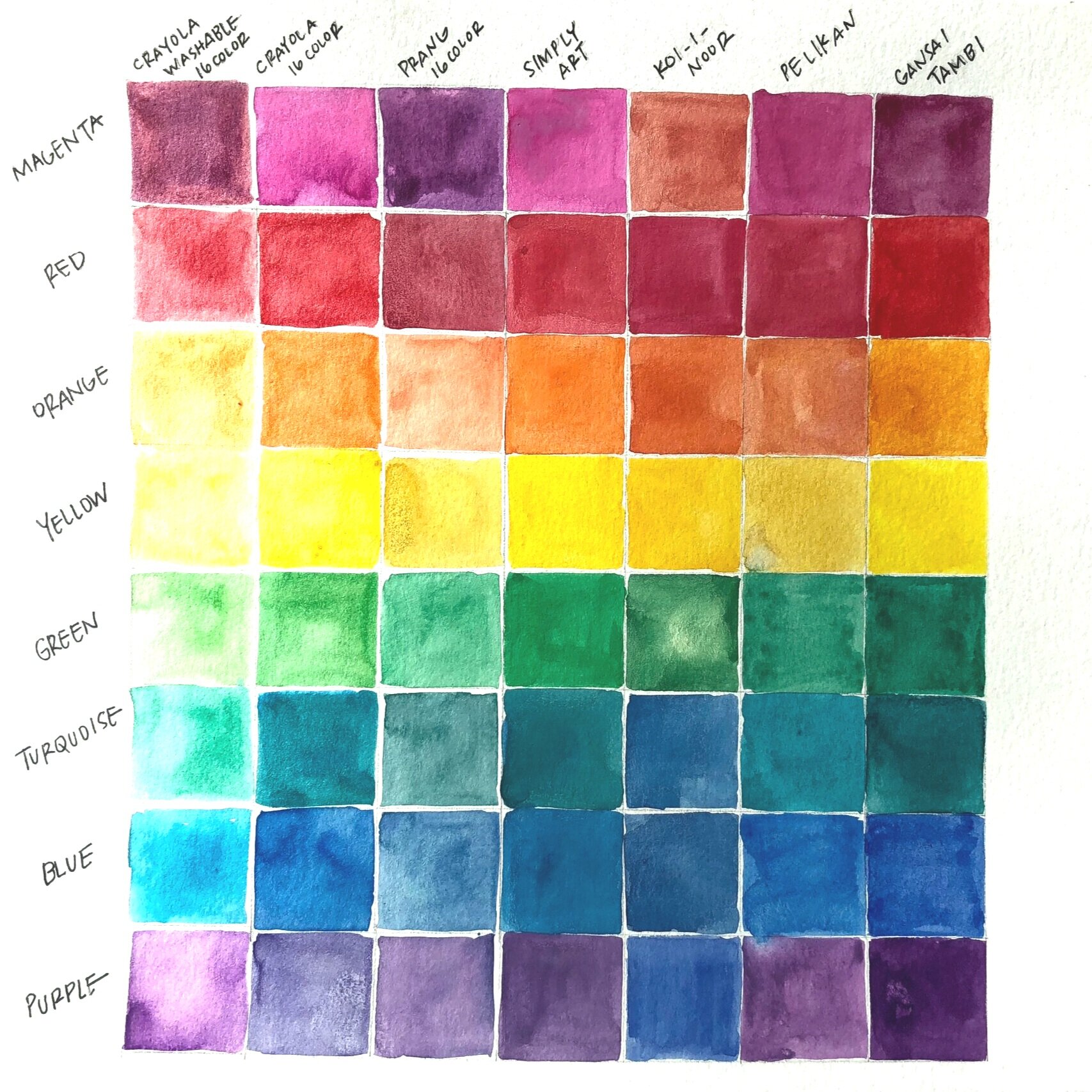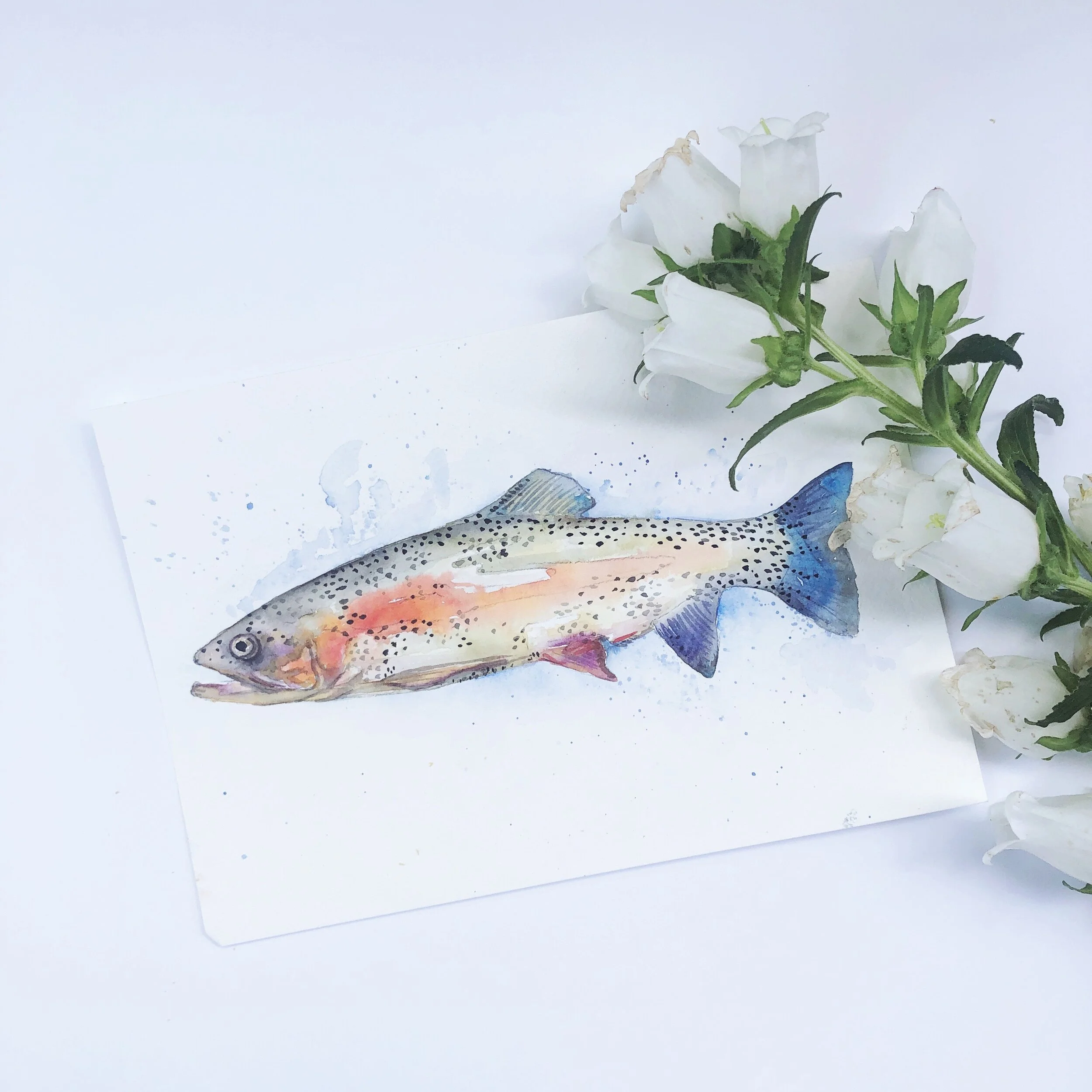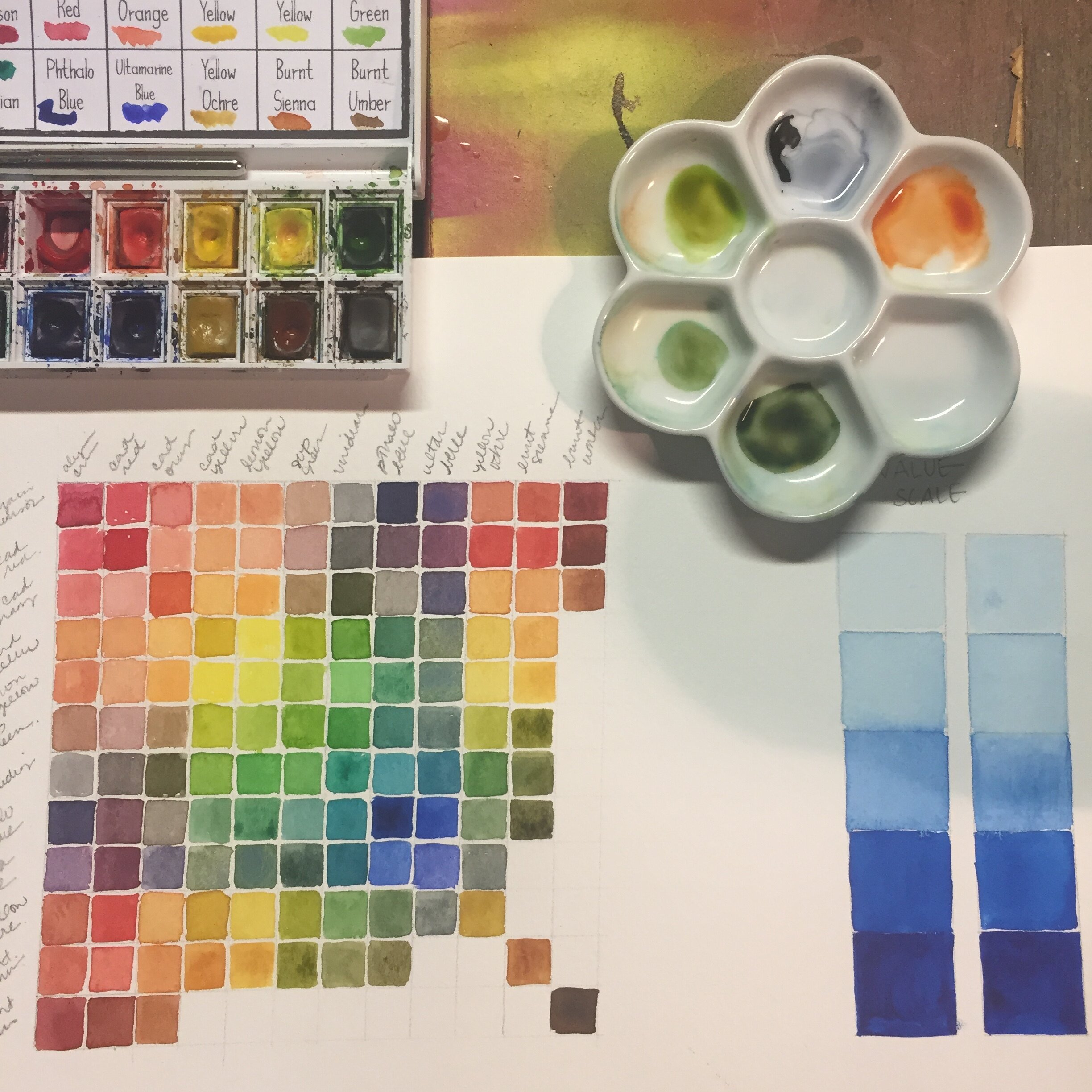Recommended Watercolor Supplies
It can be difficult to know what you need when you start experimenting with a new media, not to mention confusing and potentially expensive. If you’re looking for some guidance on where to begin, read on!
You can make beautiful paintings with a bit of practice and the most basic watercolors . Even inexpensive watercolors offered by Crayola, Prang, and Artist’s Loft produce beautiful results … if ….
… if …. if they are used on watercolor paper. I strongly believe that the most important change you make is in your paper. To successfully manipulate watercolor paint you must have a surface that is appropriate. I recommend starting on cold press 140# pound watercolor paper, my absolute favorite beginner watercolor paper is Canson XL watercolor paper. It’s inexpensive, easy to grab on Amazon or even at Walmart, and it performs well. Another alternative is here, or this. I also like this watercolor sketchbook (also can be found at Hobby Lobby) if you’re looking for more options to paint on, this one is also nice (I like the length of it). I also really enjoy these sketchbooks and take them while traveling.
I’ve worked in watercolor since I was a girl and I’ve tried a lot of different supplies. If you’re just getting started the first thing I would invest in is watercolor paper. You will need a set of watercolors (obviously), a brush ( I prefer a synthetic round #6 as a starting point), a paper towel, and water cup as well as watercolor paper that is at least 140# in weight. Below is an expanded list of supplies, in case you are looking to expand your art supplies or want some recommendations.
Watercolor Paint: There are many choices when it comes watercolor. Paint typically comes in pans or tubes. Both are totally acceptable and you can find student and professional grade in both forms. If you want to purchase from my excess supplies, we can arrange a porch pickup. Watercolor set of 12 Arteza brand (this does not include a brush), or a set of 12 with a small mixing palette and brush is available. Upgrading to a higher quality watercolor like this (my favorite student palette, though I take out the white and replace it with a cadmium red) or this will make your colors more vivid and help with technique exploration. When you’re ready to advance to a more professional set, you can purchase individual color from time tested brands. I use a combination of pigments from Sennelier, Daniel Smith and Windsor Newton.
If you are purchasing paints as individual tubes or pans, there are a plethora of colors to choose from. The most basic of palettes ( in my opinion) should include one of each primary color and a brown. I prefer painting with a set of basic 12. If you are able, I would suggest purchasing the following colors in a brand of your choice and purchasing an inexpensive travel palette like this one.
Artists have different preferences, so you’ll have to do some experimenting. I would seek out colors in person and choose at least one or two that just totally excite you. But if you need a place to start, here are my recommendations for a basic set of 12 colors.
Basic Palette of 12
cadmium red
cadmium orange
cadmium yellow
lemon yellow
sap green
forest green
prussian blue
ultramarine blue
paynes gray
yellow ochre
burnt sienna
sepia
If you have the means and want to add a few more, I would add in a few colors to expand your palette, because - I mean, color is pretty.
opera rose
cerulean
burnt umber
mars black
If you’re like me and just can’t help yourself, here are a few others that I find special and can’t help but reach for.
naples yellow
pthalo turquoise
permanent magenta
phalo green light
ultramarine violet
alizarin crimson
Paintbrush: A decent paintbrush is nice to have around, but use what you have on hand. I suggest having a mid sized round watercolor brush at the very least. The round #6 is my favorite buy (but you have to order it from Blick, they do have curbside pickup though). Another option for a single brush from Amazon or this. You can also check out these on amazon. This is This is a set that I’ve used for years
Watercolor Paper: You want 140# watercolor paper. This is my absolute favorite student watercolor paper. You can find it at Hobby Lobby or even Walmart. You can also purchase it from Amazon.
Some other items that are not necessary but might be nice to have on hand.
Transfer Paper: Transfer paper will get your image on a bit faster, but holding it up to a window is just fine. One sheet will last a good long time as it is re-usable. If you want, I’m happy to leave out a sheet for you to come grab if you’re local. If you want to purchase your own, try these from amazon or grab from hobby lobby or Michael’s
Fine Tipped Marker or pen: Nice to have on hand to add small detail or add a pen and ink aspect to paintings. A ball point pen will work, a fine tipped sharpie will give you a more permanent line. I really love Micron pens, they come in a variety of tips, making it really fit any need.
A few items that are fun to play around with: salt, rubbing alcohol, masking fluid, sumi ink, and a white pen.
By no means do you need all of this. In fact, I would start super small. But, for the sake of keeping everything in one place and a one stop shop - it’s all here for you when you’re ready. Can’t wait to see what you all paint!





